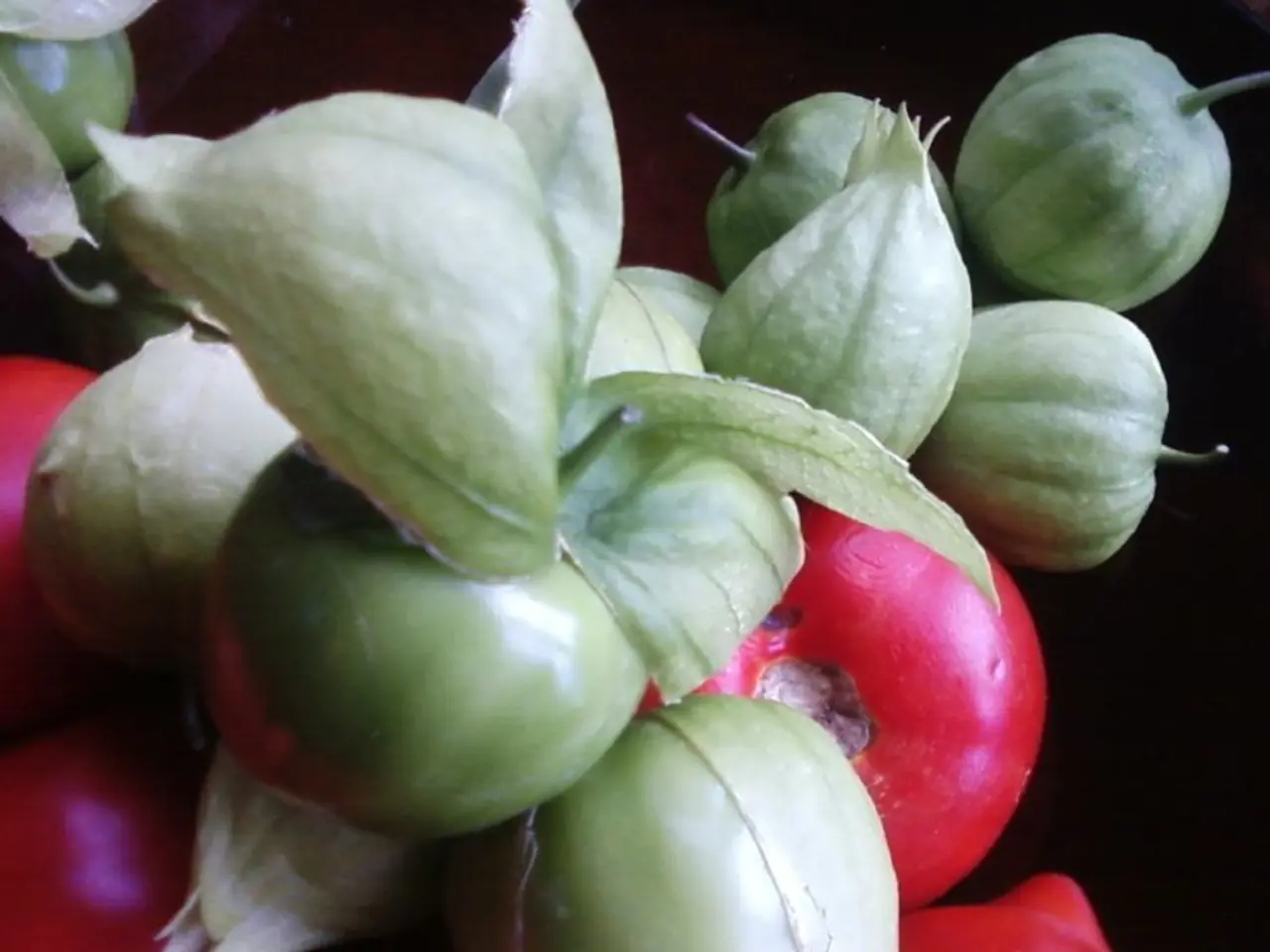Harvesting edible plants in March
In the blossoming gardens of spring, the time has come to harvest rhubarb and plant early potatoes, as well as direct sow seeds for various crops. Here's a step-by-step guide to help you get started.
Harvesting Rhubarb
To harvest rhubarb, grip the stem down near the base and twist it to pull it away from the crown cleanly. Be sure to trim off the thin sheath on the harvested stems before cooking. This practice allows the plant to recover and strengthen for longer picking next year.
Planting Potatoes
The first early potatoes should be planted in the last couple of weeks of March. Potatoes are planted in a 10-15cm deep trench or in holes about 10cm deep in raised beds. After planting, cover the potatoes with soil and protect the shoots that emerge in as little as a fortnight with frost protection, such as raking loose soil over them in trenches or covering them with straw and compost in beds where digging is not done.
Direct Sowing Seeds Outdoors
To direct sow seeds outdoors for crops like carrots, salad leaves, spring onions, and beetroot, follow these general steps:
- Prepare the soil by loosening it well and removing stones or debris, ensuring a fine, crumbly texture.
- Make shallow drills or furrows in the soil, approximately ½ inch deep (about 1.3 cm) for carrots and similar root crops.
- Sow seeds thinly along the drill or row, following the recommended spacing for each crop. For example, sow carrot seeds about 2–3 inches apart, and salad leaves and spring onions more densely but plan to thin seedlings later.
- Water the seeds gently and consistently to keep the soil moist but not waterlogged, helping germination.
- Thin seedlings as they grow, leaving recommended spacing (e.g., spring onions thinned to about 2 inches apart) to reduce competition and encourage healthy growth.
- Maintain moisture and weed control to reduce stress and competition from other plants.
Below is a table with specific information for each crop:
| Crop | Seed Depth | Spacing Between Seeds | Row Spacing | Additional Notes | |---------------|-------------------------|---------------------------------|--------------------------|----------------------------------------------------------------| | Carrots | ~½ inch (1.3 cm) deep | Sow thinly, 2–3 inches apart | Rows 12-18 inches apart | Keep soil moist; thin seedlings to avoid overcrowding | | Salad Leaves | Surface or very shallow | Sow densely; thin to harvestable size | Varies by type | Frequent harvesting encourages regrowth | | Spring Onions | ~½ inch deep | Thin to 2 inches apart after germination | Rows 12-18 inches apart | Moist soil essential; thin to reduce competition | | Beetroot | ~½ to 1 inch deep | 2-3 inches apart | 12 inches apart | Thin seedlings; keep moist; mulch to conserve moisture |
Additional Tips
- Sow seeds in their permanent outdoor growing location to avoid transplant shock common in root crops like carrots and beetroot, which have sensitive roots.
- Sow seeds a bit thickly along the drill (e.g., about 1 seed per cm for small seeds) but thin later to the recommended spacing.
- Monitor weather and soil moisture carefully because outdoor conditions vary and impact germination and growth.
- Keep soil consistently moist, especially during germination and early growth phases, and use mulch if possible to conserve moisture and help prevent bolting in sensitive crops.
With these tips, you can ensure strong root development and healthy plants adapted to outdoor conditions, which is especially important for root vegetables and hardy salad crops. Happy gardening!
In the realm of home-and-garden lifestyle, raised beds provide an excellent setting for direct sowing seeds outdoors, such as carrots, salad leaves, spring onions, and beetroot, as part of your spring gardening endeavors. With proper planting techniques and care, these crops will flourish and contribute to a bountiful harvest.
In addition, maintaining your raised beds and implementing sustainable gardening practices will bolster the overall health and productivity of your garden, ultimately enhancing your lifestyle and pleasure of nurturing your home-and-garden.




